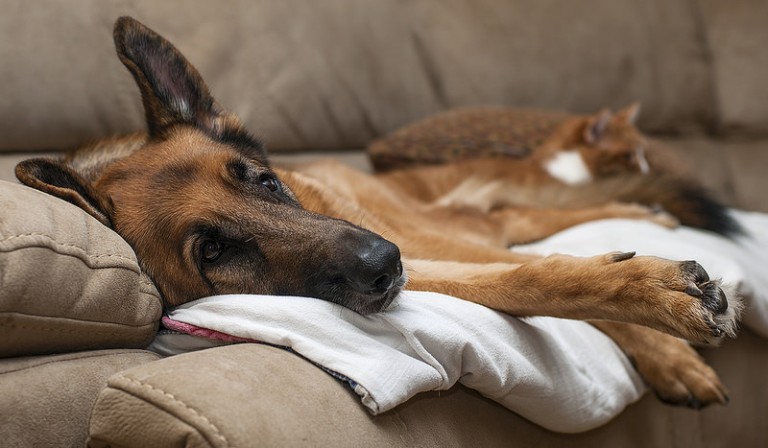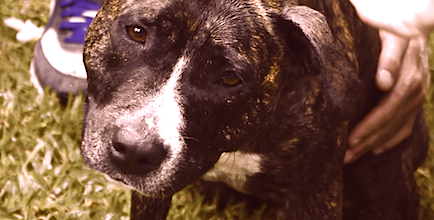Icelandic Sheepdog Breed Profile: Essential Facts
These are the only dogs native to Iceland. This small herding dog is great for families with children and other pets.
Icelandic sheepdog

Don’t leave your pet’s safety to chance
Sign up for Petful recall alerts today.

Physical Characteristics of the Icelandic Sheepdog
The Icelandic Sheepdog is an intelligent and eager-to-please breed, making it an excellent companion, especially for families with children.
Key physical traits include:
- Coat: A thick, waterproof double coat that can be either long or short.
- Color & Patterns: Various combinations and patterns exist, with no single preferred color.
- Tail: Naturally curled over the back, a distinctive trait of the breed.
- Ears: Triangular and erect, giving them an alert expression.
The Origin and History of the Icelandic Sheepdog
The Icelandic Sheepdog has a long and fascinating history, dating back to the Viking era. It is believed that the Vikings brought these dogs to Iceland when they settled there in the 9th century, using them to herd cattle, horses, and sheep.
Viking Roots and Ancestry
- Genetic studies suggest the breed originated in Norway, with links to another breed from Russia.
- Known for their exceptional herding skills, Icelandic Sheepdogs were highly valued and even exported to Britain.
- A striking historical account from 990 AD describes a famine in Iceland, during which people reportedly chose to keep their dogs over their children due to food shortages.
Popularity Among Aristocracy
- The Swedish upper class and British aristocracy favored the breed, and it was mentioned in works by William Shakespeare and Thomas Brown.
- By some accounts, an Icelandic Sheepdog was once valued as highly as a horse plus two sheep.
Decline and Preservation Efforts
- In the late 1800s, the breed’s population dropped from 24,000 to just 10,000 after Iceland imposed a heavy dog tax due to a tapeworm epidemic.
- The cause was later found to be poor public hygiene, but by then, the importation of dogs was banned (1901) to prevent disease spread.
Recognition in Dog Shows and Kennel Clubs
- 1897: First dog show appearance in Copenhagen.
- 1898: Officially recognized in Denmark.
- 1905: Registered by the English Kennel Club.
- 2010: The American Kennel Club (AKC) added the Icelandic Sheepdog to its registry.
The Icelandic Sheepdog is a highly adaptable breed, originally bred for herding cattle, horses, and sheep in Iceland’s rugged landscapes. While they continue to excel in herding roles, they are also cherished as companion pets and perform well in various dog sports.
Herding and Working Abilities
- Developed to handle challenging terrains and harsh weather while managing livestock.
- Known for their intelligence, agility, and strong work ethic, making them reliable farm dogs.
Modern-Day Roles
In addition to their traditional duties, Icelandic Sheepdogs are active participants in:
- Dog conformation shows, where they are judged based on how closely they meet the breed standard as outlined in competitions like the American Kennel Club’s conformation events.
- Agility competitions, where they showcase their speed, obedience, and problem-solving skills—ranking among the top dog breeds for agility.
- Loving companion animals, known for their friendly and affectionate nature, making them great family pets.
How Friendly are Icelandic Sheepdogs?
The Icelandic Sheepdog is known for its social, affectionate, and playful nature, making it a fantastic choice for families. However, this breed thrives on human interaction and can struggle with separation anxiety, which means it is not suited to being an outside-only dog.
Social and Family-Friendly
- Loves companionship and forms strong bonds with its owners.
- Gets along well with children, other dogs, and smaller pets due to its gentle temperament.
- Has a low prey drive, meaning it generally coexists well with smaller animals, though supervision is recommended, as individual instincts can vary (Understanding Dog Behavior Drives).
Training and Leadership
- Requires calm but firm training to reinforce positive behavior.
- Responds well to consistent leadership and clear boundaries (How to Establish Leadership Over Your Dog).
Barking Tendencies
- Naturally vocal, especially when excited, working, or playing.
- Apartment dwellers should consider this trait before adopting an Icelandic Sheepdog.
For owners concerned about their dog’s tendency to struggle when left alone, early training and gradual independence-building techniques can help prevent separation anxiety in dogs.
Is the Icelandic Sheepdog the Right Dog for You?
The Icelandic Sheepdog is a small to medium-sized herding breed with a lively and affectionate temperament. While they are adaptable to various living situations, they thrive in active households that can meet their exercise and companionship needs.
Exercise and Living Environment
- Daily walks and play sessions are essential to satisfy their natural herding instincts.
- They can adapt to apartment living if provided with enough exercise, but they prefer homes with a yard.
- Not suited for outdoor-only living, as they are prone to separation anxiety and need close interaction with their families.
Grooming and Maintenance
- Shedding is average, but expect two heavy seasonal shedding periods requiring extra brushing.
- Despite their double coat, overall maintenance is manageable with regular care.
Family Compatibility
- Known for being great with kids and other pets, making them an excellent family dog.
- Their friendly and social nature makes them a wonderful companion for those who can provide them with attention and activity.
Exercise Needs
HighHIGH: The Icelandic Sheepdog is a highly active breed that requires daily exercise to stay healthy and well-behaved. Regular physical activity not only keeps them physically fit but also helps prevent boredom and destructive behaviors.
Recommended Activities
- Daily walks and play sessions are essential for keeping your Icelandic Sheepdog stimulated.
- They make excellent jogging companions, thanks to their stamina and energy levels (Best Dog Breeds for Joggers).
- Interactive games like fetch, agility training, and herding exercises help channel their instincts.
Preventing Boredom and Anxiety
- Confinement or lack of activity can lead to destructive behavior.
- This breed is prone to separation anxiety, so leaving them alone for extended periods without mental and physical stimulation can lead to stress.
- Engaging your dog in family activities and regular exercise will help them feel calm and content.
Grooming Requirements
MediumMEDIUM: The Icelandic Sheepdog has a double coat that requires regular grooming to stay healthy. While they shed year-round like most dogs, their undercoat sheds heavily twice a year, making daily brushing essential—especially during seasonal changes.
Coat Care and Shedding Management
- To prevent matting and excess loose fur, brushing should be a part of your routine. A high-quality grooming tool can make the process easier.
- Since their thick double coat can trap heat, owners should be cautious during hot weather by keeping water and shade readily available.
Nail and Dental Care
- Regular nail trimming is crucial, as dewclaws do not naturally wear down over time. If you’re looking for an effective tool, many dog owners ask, does Pedipaws work well for nail trimming?
- Establishing a routine dental care regimen, including teeth brushing, helps prevent oral health issues.
Ear and Skin Health
- Owners should check their dog’s ears frequently for signs of discharge or irritation, which can indicate an infection.
- Grooming time is also an opportunity to spot skin abnormalities or potential health concerns early.
Some dog breeds require minimal grooming, but if you’re interested in those options, check out this list of five tiny dog breeds that stay small.
Common Health Problems
LowLOW: There are no genetic or common health problems known to be directly linked with this breed. Icelandic sheepdogs are susceptible to certain conditions that affect all dogs, such as:
- Hip dysplasia in Icelandic sheepdogs
- Dog cataracts
- Cryptorchidism
- Distichiasis (inward-growing eyelashes)
- Luxating patella (knee problems)
Annual vet visits will help your pet maintain optimum health and recognize any problems sooner. If you intend to buy an Icelandic sheepdog from a breeder, ask about any health tests given to the parents, and ask to see the parents — or at least the mother — interacting with the puppy. This ensures the dogs have been around each other and raised in a social environment.

Adopt, Don’t Shop
An Icelandic sheepdog could be waiting for a home in a shelter or rescue, so check adoption resources first if you are interested in this breed. When purchasing any dog, avoid any seller, broker or store who exhibits signs of operating a puppy mill or will not disclose the dog’s origin, parents or medical history.
Related Dog Breed Profiles You May Like
- Italian Greyhound Breed Profile: Essential Facts
- Kuvasz Breed Profile: Essential Facts
- Spanish Water Dog Breed Profile: Essential Facts
- Whippet Breed Profile: Essential Facts
- Wire Fox Terrier Breed Profile: Essential Facts
frequently Asked Questions (FAQ)
Are Icelandic Sheepdogs good pets?
Yes, Icelandic Sheepdogs are excellent pets due to their friendly, affectionate, and family-oriented nature.
Can Icelandic Sheepdogs be left alone?
They do not tolerate being left alone for long periods and are prone to separation anxiety if not properly trained.
Do Icelandic Sheepdogs bark a lot?
Yes, they are naturally vocal and tend to bark when excited, working, or alerting their owners to something unusual.
How much does an Icelandic Sheepdog cost?
The price of an Icelandic Sheepdog typically ranges from $800 to $2,000, depending on the breeder, lineage, and location.
Additional Resources
- American Kennel Club’s Icelandic Sheepdog Page
- The Icelandic Sheepdog Association of America
- Canadian Icelandic Sheepdog Club







